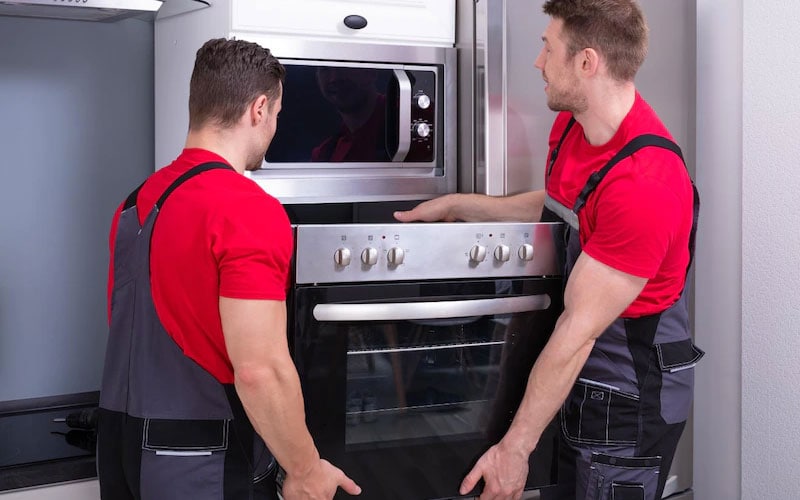
If you’re putting a new appliance in your office, you’ve likely heard the best tips on appliance installation, but you’re not sure where to start. Read on to appliance installation Washington DC for some helpful advice. First, take the time to measure the space where you want the appliance to be installed, and inspect gaskets for leaks and other issues. Once you have these issues in order, you can confidently begin the installation process.
Easy Appliance Installation Tips
1. Measure your space
Before you buy any new appliance, make sure to measure your space. It is essential to measure the distance, not the model. The measurements will help you determine what type of appliance to buy. They will also help you filter out other requirements. For example, if you’re looking for a washing machine that fits in a small room, you may opt for a compact one. On the other hand, if you have a big family, you may need a giant machine that can fit the whole process.
If you’re planning to renovate your kitchen, take measurements for the pantry door, the island, and the pantry. Start measuring at the upper-left corner of the room, then measure to the top of the ceiling. When calculating the room for a new refrigerator, you’ll want to consider the window’s height. Also, measure the height of the ceiling, as well as the width across the front.
2. Check for leaks
There are many different ways to check for leaks. Some are obvious, while others aren’t as easy to spot. Fortunately, there are ways to identify a potential leak before it causes damage to your home or property. First, check your water meter to see where water is escaping. Next, run a tap until there is no water coming out. Alternatively, you can call a plumber for assistance. Listed below are three common ways to spot a leak:
Gas lines are essential components of any home. If there are any cracks, they may indicate that there are leaks. The most common locations for leaks are the connections and parts of the appliance. A common liquid dish soap works well as a leak detection solution. First, apply the soap to the leak to create bubbles, then scrub off the soap with a wet cloth. Alternatively, you can try a unique product called “Leak Detection Soap” or simply use common liquid dish soap. To prevent the occurrence of leaks, use a thick solution.
3. Inspect the gaskets
If you have trouble with a newly installed appliance, you should inspect the gaskets before starting the installation process. Gaskets are necessary for any appliance, as they prevent air and water from escaping through the door. Checking for worn spots will increase the efficiency of the appliance. To inspect the gaskets, hold a dollar bill against it, drag it across it and observe the amount of resistance. If there’s any sponginess or hardness, you should replace it. Be sure to use the right gaskets for the type of appliance you’re installing and that they fit. Universal gaskets may not work with all devices. Also, make sure to remove any fasteners if they are on the door panel.
A worn-out gasket can affect the refrigerator’s efficiency and may even cause water to leak inside. It’s also important to check the door gasket for tears, as they may compromise the seal integrity and energy efficiency. To test the integrity of the gasket, insert a dollar bill and try to pull it out. If the paper pulls away easily, you need to replace the gasket. Check the gasket for other signs of wear and tear.
4. Make sure the appliance fits
Buying an appliance may seem easy, but if you have never installed it before, you should know how to ensure that it will fit before installing it. The first step in this process is to measure the space where the appliance will be placed and ensure that the home entrance is wide enough. Next, measure the path that the appliance will take through the house as well as the stairway to the upstairs.
To start, measure the space where the appliance will be installed. You need to have room for venting, hookups, and doors. Some brands of appliances offer comprehensive guides for measuring the space. Also, be sure to consider the placement of electrical outlets. Finally, ensure they have ventilation ports for the air that will be forced out of the appliance. Then, follow the manufacturer’s instructions. Then, you can begin installing the appliance.
5. Hire a professional
You may not realize it, but there are many reasons to hire a professional for appliance installation. First, professionals are trained to do it correctly and will protect your investment by following strict installation procedures. They also have the necessary tools and knowledge for the job. If you don’t have the experience, you risk damaging the appliance and voiding the warranty. Besides, a professional can install the machine safely, avoiding possible accidents.
Larger projects such as installing a dishwasher or washing machine require a professional, so you should know what you need before hiring a contractor. While you can tackle smaller repairs yourself, larger jobs will require the expertise of a professional. Before hiring a contractor, ask them about their insurance policies and safety procedures. Most contractors have liability and workers’ compensation policies to protect their clients. It’s also important to inquire about the protection plan for your home and flooring. If your contractor doesn’t have these plans, you should avoid them.







